

Rapid technological advancement has transformed the designing of learning programs in the corporate world today.
The use of well-established and effective learning evaluation models, like the ADDIE model, has made it even easier to develop effective learning programs that ensure successful training sessions that facilitate employee development.
There are five factors of the ADDIE model. Each factor focuses on a different aspect of planning, producing, implementing, evaluating, and improving your training programs. This blog will teach you about the ADDIE model, its uses, application, and much more.
Let’s get started.
The ADDIE model is a five-step learning evaluation model used by instructional designers and trainers to design, develop, implement, and evaluate learning programs. The acronym ‘ADDIE’ stands for Analysis, Design, Development (or creating), Implementation, and Evaluation.
The ADDIE model was initially designed by the Florida State University for the U.S. Army in 1975 and has since emerged as the default process of instructional design for organisations worldwide in present times.
The ADDIE model helps develop a well-structured framework for every piece of training material created, which ensures maximum effectiveness, and enables a well-planned, organised and effectively deliverable training program.
Besides corporate training initiatives, the ADDIE model can be applied to several types of learning material like online or offline courses, lectures, coaching sessions, information brochures, etc.

As mentioned previously, ADDIE stands for Analysis, Design, Development, Implementation, and Evaluation. Each letter in the acronym stands for a phase of the ADDIE learning evaluation model.
The ADDIE model needs to be completed in the sequential order in which it is present, starting from analysis to evaluation. The model is designed as a continuous process of improvement and development.
The ADDIE model helps organise and streamline the production of course materials for training programs. One of the reasons the ADDIE model has been so successful is that it is associated with a decent quality design, crisp learning objectives and specific, structured content to get the desired learning outcomes.
We shall now look at each phase of the ADDIE model and go through the processes involved.
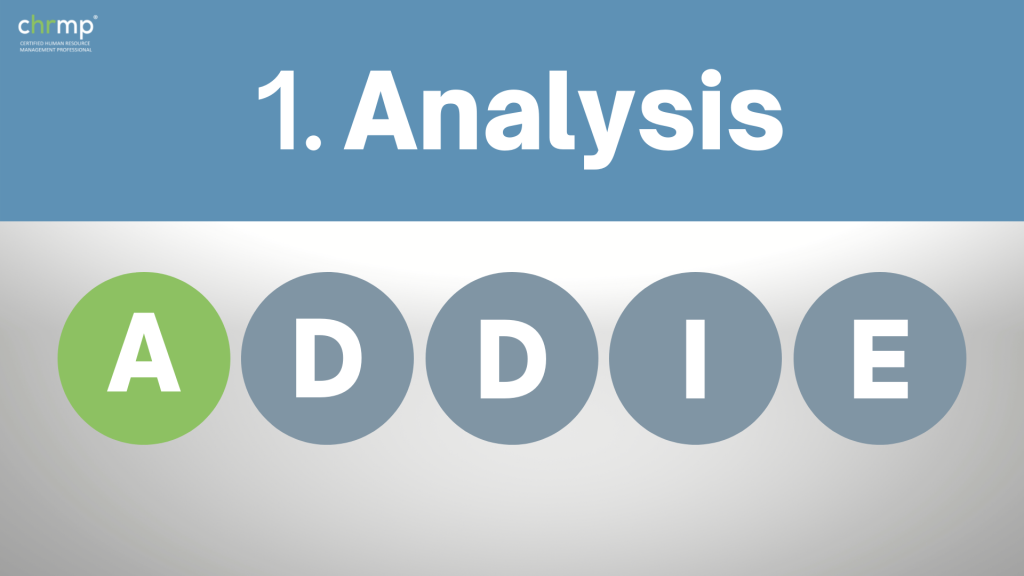
The analysis stage focuses on all the foundational factors involved in developing a course, like a problem, training needs, the target audience and learning goals.
In this phase, the instructors look to identify the problem to analyse training needs. There is no standardised framework for what needs to be included in the analysis phase because it varies depending on the company’s needs.
But some primary outputs include identifying the problem and acknowledging skill gaps. A company stakeholder approaches the instructional designer with a lingering problem like diminishing sales or a lack of vital employee skills.
The problem will be analysed to determine whether training can solve it. Eventually, other factors, such as skill gaps, current knowledge, hindrances, etc., will be evaluated to begin designing a training program.
Some of the questions addressed in the Analysis phase include:
Once you have the answer to the questions like the ones mentioned above, you will have a basic framework of the training program that fits all your company’s needs.
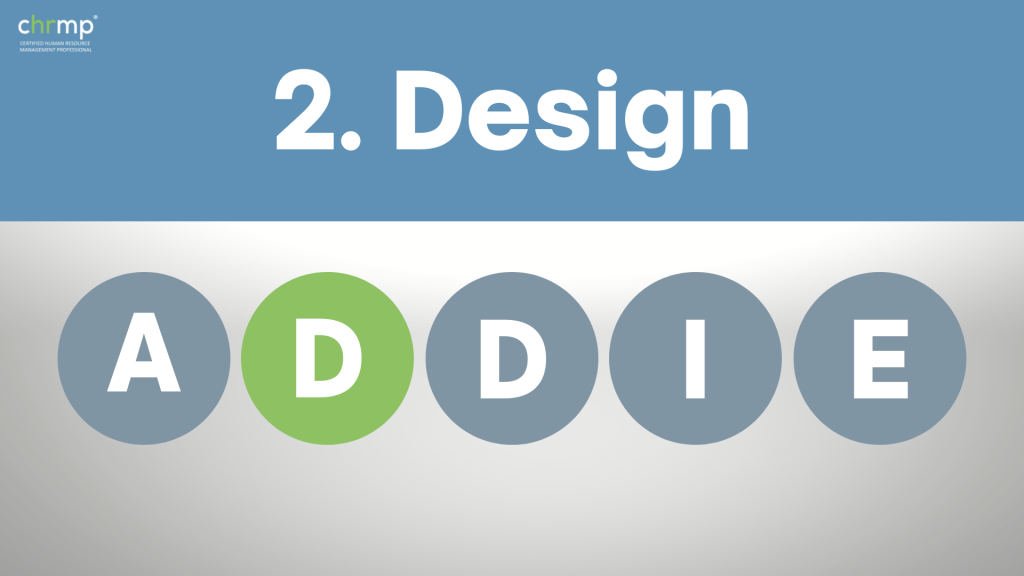
The main objective of the design phase is to create a well-designed curriculum. You must ensure that you have a clear idea of your company’s training needs, what the employees know, and how much they already understand. Then, you need to develop a plan to carry out the training program.
The design phase is the most critical phase of creating an effective training program and is also the most time-intensive. It also requires excellent attention to detail.
The design phase focuses mainly on learning objectives, subject matter analysis, lesson planning, assessment, and media selection.
According to the ADDIE model, building a storyboard or a blueprint of the entire course proves beneficial in helping instructional designers and stakeholders to visualise the bigger picture with ease while speeding up the development process.
By the end of the design phase, a comprehensive outline of the course, along with the overall design and the storyboard/blueprint, is ready.
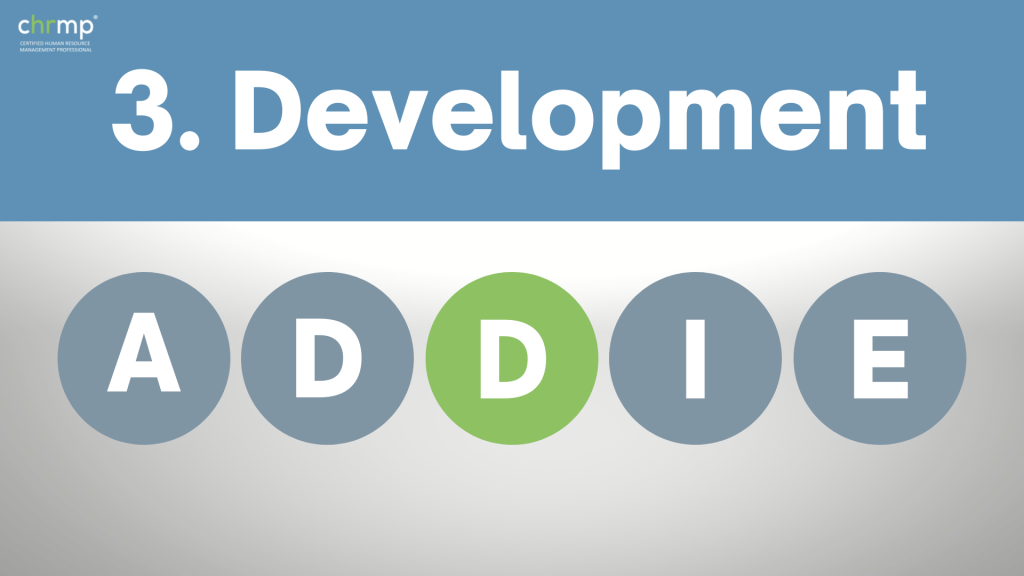
With the help of the output from the analysis and design phase, the course enters the creation process in the development phase. This phase requires instructional designers to plan and test their ideas. The main goal of the development phase is to ensure that the program meets the requirements set out by the stakeholders.
The development phase involves laying out the content in a visual format, creating graphics, choosing fonts and colour schemes, making videos and infographics, etc.
A significant part of the development phase is testing the course, which mainly involves establishing testing and review methods with the stakeholders. Testing is a critical part of the entire process; hence it’s good to have extra sets of eyes following the whole process so that no error goes unnoticed.
By the end of the development phase, the course and initial beta testing are completed.
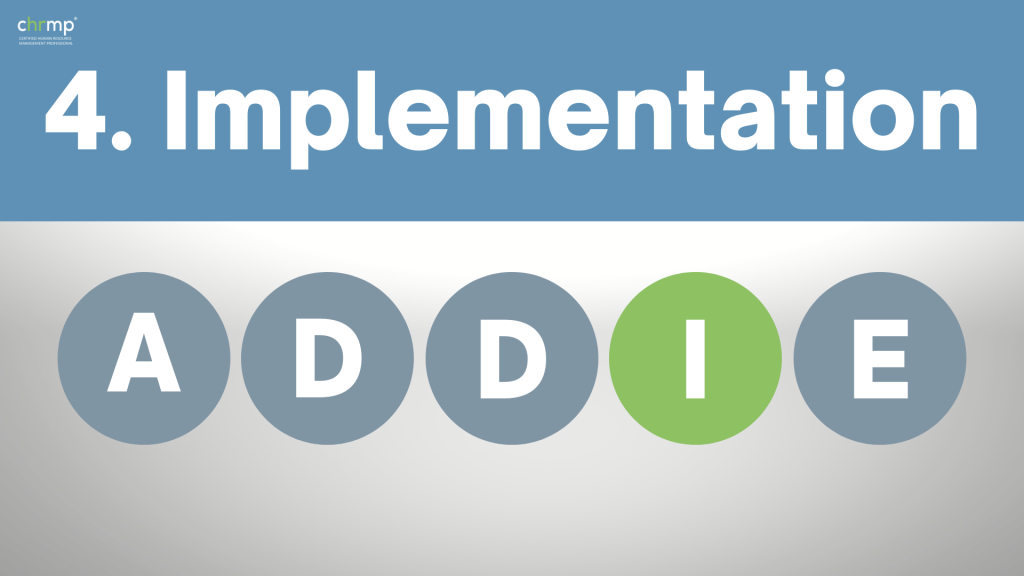
Once the course is completed and initial testing is done, the next stage is implementing the course. This stage is an essential part of the process.
Some key features of the implementation phase include delivery, communication and feedback.
Delivery of the course involves distributing it to the employees in the chosen format along with accompanying materials like guides or manuals.
Once the course is delivered and employees start using it, you will need to create a communication plan to address any issues the employees might face and receive feedback on the course.
The instructional designers then use this information to revise the course and make necessary changes to enhance the learning experience.
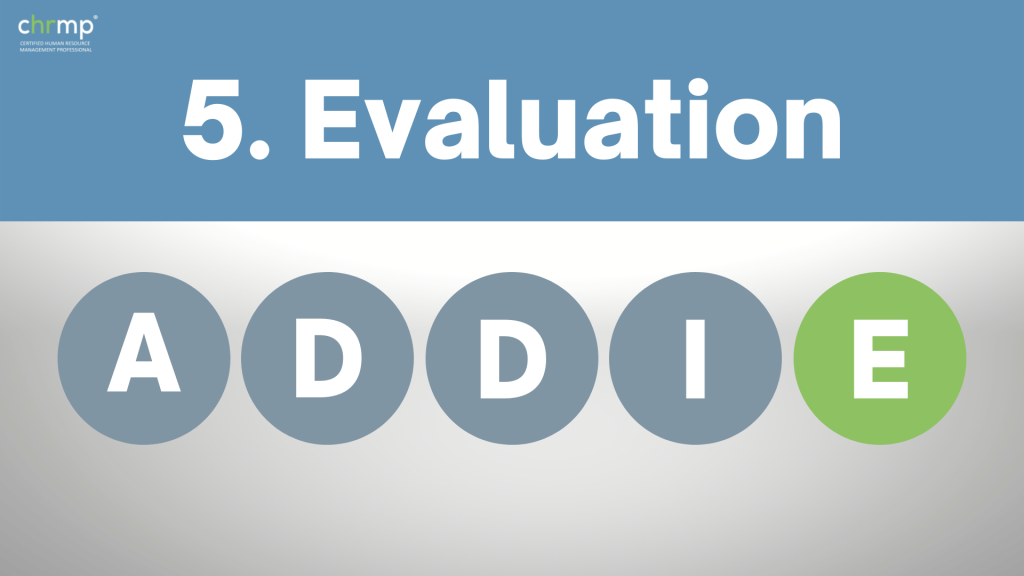
The evaluation phase is the final phase in the ADDIE model. It involves measuring the efficiency and overall effectiveness of the course by collecting information to check whether the course requires more modifications to better suit learning needs.
Collecting data in the evaluation phase concerning the effectiveness of the training program can be done through several methods like surveys, interviews, questionnaires, or focus groups.
Evaluation is a vital component of the ADDIE process because it helps answer questions like: Is the course working? Is the training program successful? The outputs are then compared with the initially set goals to evaluate the program’s effectiveness.
Based on the analysis of the results, further changes are made to the course, or in some cases, the entire ADDIE process is implemented once more to create a new course with the required improvements.
Even though the ADDIE model is widely used in the corporate world to design training programs, it is still one of several available models of instructional designs.
Another popular model is the SAM model, which is considered a popular alternative to ADDIE.
The abbreviation ‘SAM’ stands for Successive Approximation Model. Allen Interactions introduced it in 2012, and unlike the ADDIE model, SAM is a cyclical process that cuts short the time and cost of the program.
It has several variations, but the most common feature of SAM is that it introduces iteration into the design process, including rapid prototyping and early addition of development and implementation in the process.
Using SAM, you can eliminate one of the significant drawbacks faced while using the ADDIE model, i.e., the time-consuming nature of creating and implementing the program. The SAM allows you to reach the implementation phase faster.
While the SAM does have appealing features like low cost and a faster process, early training programs based on the SAM often require several iterations and modifications to achieve the desired result.
The ADDIE model and the SAM have unique features; hence, choosing between the two doesn’t need to be mutually exclusive.
Selecting a model comes down to the organisation’s needs, the situation and the time available. The choice also depends on the team tasked with creating the training program.
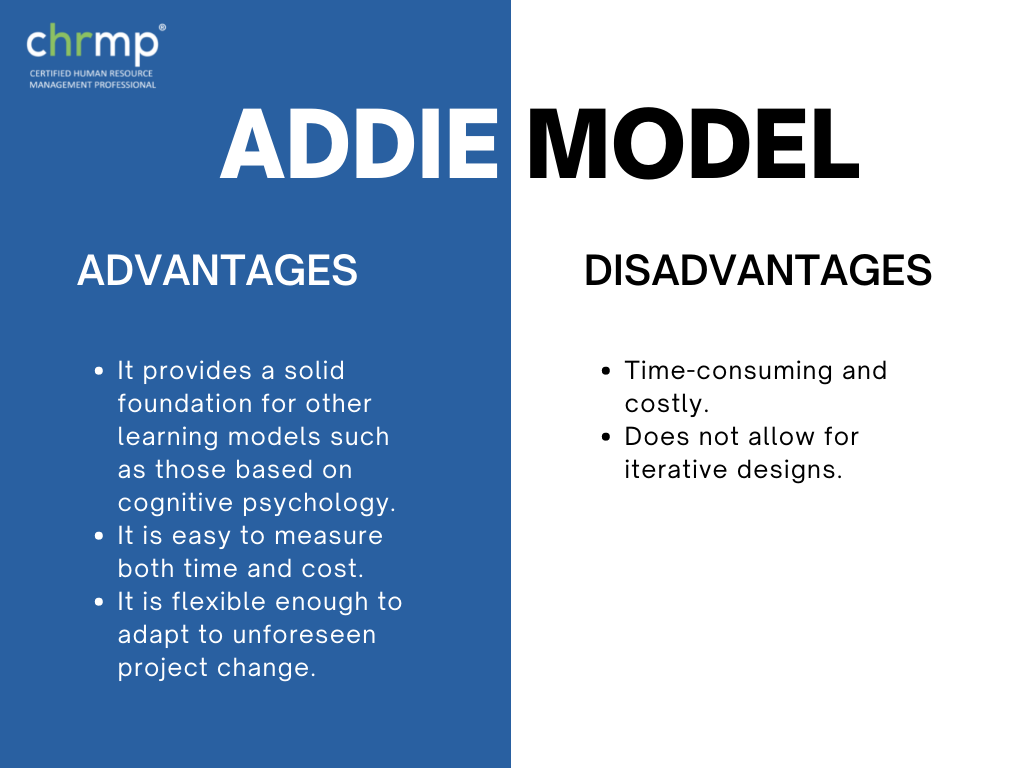
The advantages of ADDIE include being widely used and accepted as an effective model for human learning. It provides a solid foundation for other learning models, such as those based on cognitive psychology.
In courses designed using the ADDIE model, it is also easy to measure both time and cost.
On the other hand, the ADDIE model is also a rigidly linear process that requires following a specific sequence and does not have enough flexibility to adapt to unforeseen changes in the project.
It is also time-consuming and costly and does not allow for iterative designs.
What does the ADDIE acronym stand for?
The acronym ‘ADDIE’ stands for Analysis, Design, Development, Implementation, and Evaluation.
What is the importance of the ADDIE model?
The ADDIE instructional design model helps create a structured process to develop effective and efficient training programs. Every step in the ADDIE model helps ensure that the learning solutions effectively meet the learners’ needs.
What’s the first step in implementing the ADDIE model?
The Analysis Phase is the first step in implementing the ADDIE model of instructional design. The analysis stage focuses on all the foundational factors involved in developing a course.
What is the final step in implementing the ADDIE model?
The final step in the ADDIE model of instructional design is the evaluation phase which involves measuring the efficiency and overall effectiveness of the course.
Where did the ADDIE model originate?
The ADDIE model was initially designed by the Florida State University for the U.S. Army in 1975 and has since emerged as the default process of instructional design for organisations worldwide in present times.
How is the ADDIE a helpful model?
The ADDIE model is outdated but still very useful. Although initially designed as a linear process, it is now being used iteratively. Once the five phases are completed, you can start over again. You can then use the analysis phase to improve your end product.
© 2007-2025 CHRMP| All Rights Reserved | Powered by Ripples Learning & Research Private Limited
